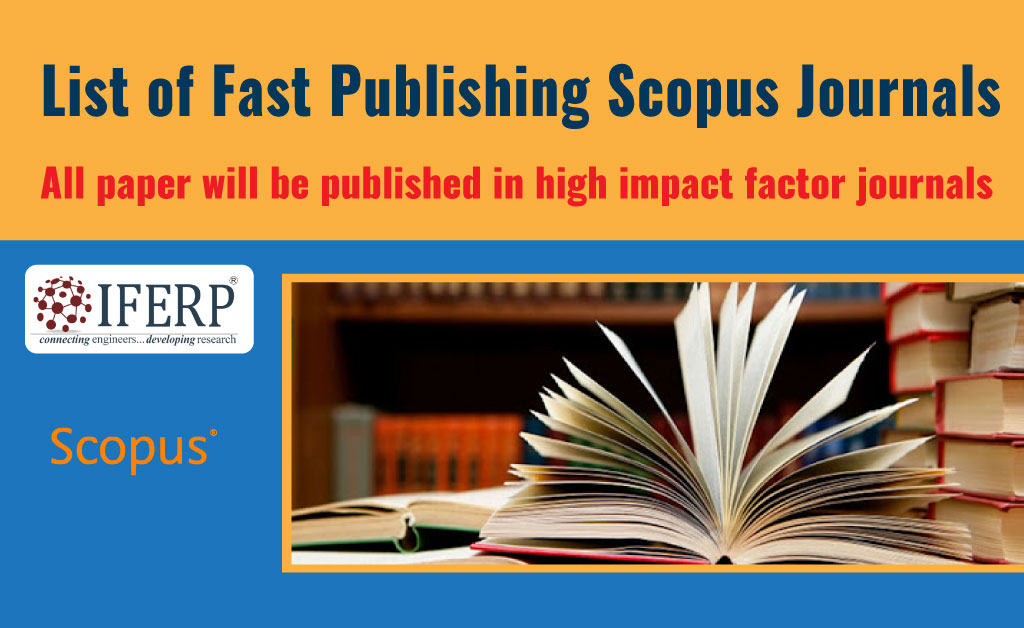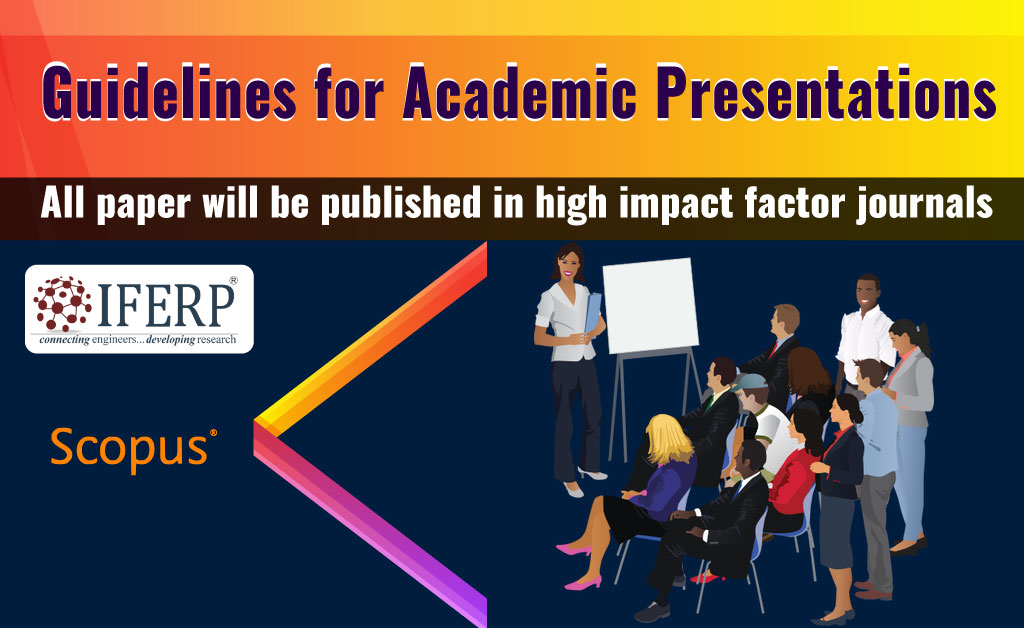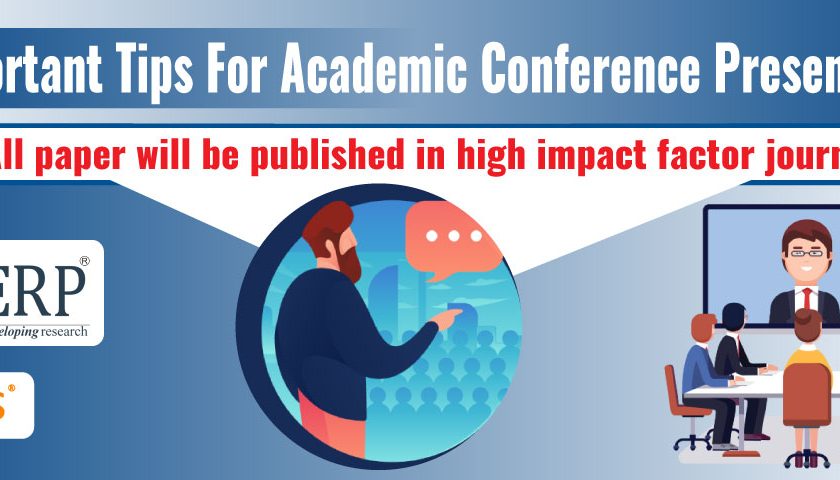Most researchers are under the impression that the only thing they need to do to get the word out about their pioneering research work is to get their work published in a fast publishing Scopus journal 2023. A key part of academic development is developing the skills necessary to deliver excellent presentations at conferences. These are skills that can be learned. While some people are naturally talented public speakers, one can always develop and train themselves to better present their work and ideas. One’s ability to present their work confidently and effectively will be a key skill that will help them not just in spreading awareness of their better but also in advancing their careers in general.
One of the most important skills researchers can learn is how to deliver an effective research speech, lecture, or presentation to an audience. Every academic, at some point, has to learn to do this, and the sooner, the better. Most working academics have to lecture students almost daily. Standing in front of a crowded room is a very nerve-racking experience. It is vital to remember that it’s okay to be nervous about introducing oneself and showing one’s work to others. Learning the skills required to give effective lectures and presentations is the key to academic success. Preparation is always the key, and it involves planning presentations beforehand. This will make it possible to control the nerves and do a good job. The way one presents their work will also come in handy during job interviews and also makes the difference between success and failure.
Following the guidelines, tips, and tricks highlighted in this article should help ensure one does the best possible job when presenting their work in front of an audience. Most often, researchers and academics who don’t think they have a natural gift for public speaking use this as a convenient reason not to keep working on developing the skill. What a lot of successful speakers will attest to, however, is that natural talent doesn’t get one very far. The key here is to be practical and to keep the presentation simple. A lot of the best speakers have worked hard to master this skill. They approach public speaking as a profession that can be honed through dedicated perseverance.

Routines To Improve Public Speaking Abilities
These routines will come in handy for those who are planning on –
- delivering a big presentation at an upcoming international conference 2023,
- deliver a lecture at their own university,
- teaching students, or
- present their research in the context of a job interview.
- Identifying The Objectives Of A Presentation
“Why am I speaking?”, and “Why are the audience there to listen to me?” “Am I trying to educate them, persuade them to take action, or just connect with them?” These are all questions that someone planning on delivering a presentation should ask themselves. If one knows their goal, they can choose engagement tactics to help themselves reach it. A presenter should always want to educate and inform members of the audience while demonstrating their expertise and commitment to a specific discipline.
Indeed, if presenters put in the time and rehearse their presentations, they will be much more comfortable and more likely to achieve the objectives of their presentation. Some college lecturers literally make a script, practice that script over and over again until it feels natural and feels natural to the audience. Is it worth it? Here’s a good rule of thumb – if an opportunity is low stakes, spending less time on it is key. If these are important issues, scheduling time on the calendar to practice until perfect helps immensely. Nobody wants to walk into that next big college conference to give a speech and just “see how it goes.”
- Charting A Seamless Flow For The Presentation
A key tip for conference presentation success is organization – how to identify the key message in the presentation to make sure the audience remembers the lecture and leaves the event with their minds blown. “What types of content are needed for a limited time engineering college conference 2023 lecture?”, “How many slides should be used for a fifteen minute presentation?”, and “What are the facts and figures that should be included?”. All these are crucial questions to ask and answer as part of the organization process for a presentation. Content, flow, and structure are the pillars of delivering an effective, thought-provoking, and enlightening presentation. Those in need of professional assistance with planning and preparing a world-class presentation can avail of the services of a professional organization such as IFERP.
- Bearing In Mind That Slides Are Just A Tool
Research presentations live at the crossroads of theater and academia. What theatrical elements can one inject into their presentation in order to make it a memorable one? For instance, even if one practices until they can deliver the speech while they sleep, they still leave room for improvisation on stage. Their presentation will appear more natural.
We’ve all been to conferences where the slides are bad, hard to read, poorly constructed, awkward, or just plain awful. Researchers should learn the art of easily designing and creating effective slides that sell their message and that are engaging and interesting to their audiences by considering infographics or illustrations as attention-grabbing mechanisms.
No one has ever been really inspired by a slide game. Instead, one’s presentation should be based on their words – the story they are telling. But if one’s presentation is going to include slides, they should prepare them after they’ve written their speech. One might find that the visuals won’t improve their presentation after all. Plus, using a projector could be a colossal mistake because technology can fail. Everybody’s been to conferences where the speakers have to spend a lot of time at first playing with the projector and trying to transfer their slides to the computer in the venue. Trying to get to the room earlier and making sure the slides perform well when projected on a screen and not just the computer screen should help tremendously in this regard.
- Taming Stage Fright
Having nerves before a presentation is perfectly normal. Overcoming stage fright helps in looking confident in front of the audience. Practicing certain parts of the presentation is essential to ensuring success while improvising in other places can be beneficial in keeping the audience engaged as well. Body language plays a vital role in presentations, especially at university conferences. There are normally a number of facts and findings to highlight in a conference presentation, and one should use all the presentation tools at their disposal to make sure their presentation is interesting and effective from start to finish. A presenter’s gestures, tone of voice, and positivity can be seen through their body language and can determine how engaged their audience is.

When researchers speak, a few tips on body language can help them improve their relationship with the audience. In order to keep the audience engaged, it’s important that they can see the presenter, that they watch them, and that they make eye contact. Researchers should try to widen their gaze rather than staring at one person. And avoid focusing intensely on their laptop screen, their notes, or the floor. It can make them seem nervous or indifferent and can also prevent them from clearly projecting their voice.
If possible, researchers should try not to stand behind a lectern and hold notes. Instead, they should keep an upright, relaxed, and open posture and feel free to get comfortable with the whole stage and move around the stage a bit as they speak.
Great presenters use gestures to emphasize their points and highlight their visual material to guide the audience’s attention. When they see a speaker firmly rooted and not displaying positive body language, the presentation begins to lose a lot of its emphasis. Researchers should also avoid other distracting movements, such as repeatedly putting their hands in and out of their pockets, jingling coins in their pockets, or playing with pens, clothing, or accessories such as laser pointers.
- Promoting Discourse
If a researcher manages their time well, they will have plenty of time for questions and open discussion after their conference presentation. They should expect questions, but not worry if there aren’t any. If their audience is reluctant to ask questions, a good session chair will usually ask a question. Questions about a presentation are a good thing. They give the presenters a chance to develop something that was not clear or bring up a point of debate that everyone wants to know more about but forgot to include.
Answering questions can be nerve-racking with the fear of not being able to answer them. But when the audience asks questions, it’s usually out of genuine interest, not to trip the presenter up, so see it as a good opportunity to explore how they can expand their work. While the majority of questions in an 2023 educational conference Q&A session are fairly harmless, one might find themselves at the end of a grid (perhaps from someone doing research that they had the temerity to challenge) after presenting at a conference.
And if one is feeling nervous about facing tough questions, here’s something that might help – if they’re attending the meeting with someone they know (and trust), they can ask the companion to ask them a question. Some people even like to agree on the matter in advance. It can just help them get started and build their self-confidence.
And finally, a tip trick that seasoned researchers all follow is to keep a notebook and pen handy and take notes on the right questions for later thinking. These notes will also come in handy when you’re trying to pitch an article or prepare a cover letter to send to a Scopus indexed journal 2023.
A researcher’s first presentation is a special thing. It’s like taking one’s first long trip, or going abroad, on their own, with just enough money to do it, and with a lot of doubts and fears about what might happen, but also with a lot of big expectations about the beauty of the trip. Much like a first trip, a first presentation should be something to celebrate (or at least close to it), something that researchers would love to do and most likely will do over and over again.
The first presentation is a unique experience. It’s a right of way that all researchers borrow at one time or another. Whether it’s one’s own motivation that drives them to a conference presentation, or a supervisor that encourages them to go, it’s a great thing to do. For the first time ever, one will be actively interacting with their academic peers from across the country or even the world. One gets to talk, and the audience will listen to them – what an opportunity.
The nerves play a vital role in this process as we know it. But if one thinks they are getting the most out of them, they should bear in mind that most people would feel the same way if they were in their place. When one manages to go through the steps that have been outlined above, they can rest assured that it will be a great presentation. Only a few people have a natural talent for public speaking. For most, however, it takes practice and smart tactics to become effective, memorable speakers. If you’re someone who has carried out some groundbreaking research in your field, attend an international conference 2023 and present your work.


